QuestionHi Patt,
My puppy is being a total nuisance, she will not listen to me at all.
Can you give me some training tips and how to train her myself.
Thanks
AnswerHi Karla
Try this:
Hello there
I would like to be advised the best and most positive way to train and start my new puppy on the correct foot so to speak?
She is now a stinker, chewing all things, I do not want to spank her, so what is the right way to stop this behavior?
She eats then poops on the floor after I take her out and wait and she will not go on grass, what is wrong with me or the puppy? pLease advise quickly and thank you. Answer Spanking a puppy seldom does much good. There are other things that are more effective when you must resort to punishing a dog.
Going out with her and praising her for a bowel movement, is one of the keys. Usually a young puppy can't hold it very long after eating. Stay out with her and keep her moving, playing fetch if you have to. The grass is new to her, and it may take a while. Also, try her in a graveled area or even put down a paper outside. There may be more details that will help here:
Much of housebreaking is not training the puppy, but making it easier for your
puppy, you, and your carpet while its body to catches up to its instincts. At
around 8 weeks when the puppy goes to its new home, the time from when it
realizes it has to go, and when it can't wait any longer is a matter of
seconds. Only time will fix that. You can hardly be expected to be attentive
enough to avoid all accidents There is no sense punishing the puppy for your
inattention. It is not fair to punish you either, but you still have to clean
it up if you didn't have the puppy outside in time.
Housebreaking starts before you get home with the new puppy. If you don't have
a crate, buy one. I prefer the more enclosed, den like plastic ones. Skip the
bedding. At first it gets wet, and later it can be chewed into choking
hazards. A wire rack in the bottom will help keep the puppy up out of
accidents at first. They are available with the crates, but a piece of closely
spaced wire closet shelving from a home supply place is cheaper. If you
already have a metal crate, covering it may help. Just make sure you use
something the puppy can't pull in and chew. Dogs that start out in crates as
little puppies, accept them very well. Never leave an unattended puppy loose
in the house. If nobody can watch it, put it in the crate. I suggest letting
the dog have its crate all its life.
Choose a command and spot you want it to use. The less accessible to strays,
the less chance of serious disease. If it is a female, choosing a
non grassy spot will avoid brown spots later. When you bring it home, take it
to the spot and give it the command in a firm, but friendly voice. Keep
repeating the command and let the puppy sniff around. If it does anything,
praise it. Really let it know what a good dog it is and how much you love it,
and maybe a treat. Note, being out there not only means you can praise it,
but it also keeps it from being snatched by a hawk. If it doesn't go, take it
inside and give it a drink and any meals scheduled. A young puppy will need to
go out immediately afterward. Go to the spot and follow the above routine.
Praising it if it goes is extremely important. If it doesn't go, take it back
inside and put it in its crate and try again soon. Do not let it loose in the
house until it does go.
At first it is your responsibility to know and take the puppy out when it
needs to go. It needs to go out the first thing in the morning, after eating,
drinking, and sleeping. If it quits playing, and starts running around
sniffing, it is looking for a place to go. Take it out quickly. You will just
have to be what I call puppy broke until it is a little older.
By the time most dogs are about 3 months old, they have figured out that if
they go to the door and stand, you will let them out. The praise slowly shifts
to going to the door. Some people hang a bell there for the dog to paw. If
your dog doesn't figure this out, try praising it and putting it out if it
even gets near the door. A stern "Bad dog!" is all the punishment that is
effective, and only when you catch it in the act and are sure you didn't miss
it going to the door. Clean up accidents promptly. I mostly keep the little
puppies out of the carpeted rooms. Still I need the can of carpet foam
sometimes. First blot up all the urine you can with a dry towel. Keep moving
it and stepping on it until a fresh area stays dry. A couple big putty knives
work well on bowel movements. Just slide one under it while holding it with
the other. This gets it up with a minimum of pushing it down into the carpet.
This works with even relatively soft ones, vomit, dirt from over turned house
plants, or anything else from solids to thick liquids. Finish up with a good
shot of carpet foam. Note, do not let the puppy lick up the carpet foam.
Once the dog is reliably housebroken, your carpet may need a good steam cleaning.
Shredding everything in the house is a common problem. Keep a close eye on the puppy, being ready with an instant, stern "Bad dog!" as soon as she starts to chew anything except the safe toys you have selected for her such as Nylabones and Kongs. A mousetrap is very effective in making a dog leave something alone. Most
dogs will stay away from anywhere they were surprised by a snap. The best
part is that it is not you that is correcting the dog. It works whether you
are around or not. The mousetrap is very patient and is always on task as
long as you reset it.
Better than mousetraps when you aren't around is the crate. Other dogs may
not be as bad as the young Labs I am plagued with. Still your house and dog
will be much safer with the dog in a crate when you are away. The dog may be
happier in its den than loose in the house. It relaxes, it feels safe in its
den. It rests, the body slows down reducing the need for water and relieving
its self. Dogs that have been crated all along do very well. Many of them
will rest in their crates even when the door is open. I think the plastic
ones give the dog more of a safe, enclosed den feeling. They are harder for
dogs to open too. Metal ones can be put in a corner or covered with
something the dog can't pull in and chew. Select
a crate just big enough for the full grown dog to stretch out in.
Leave it some toys. Perhaps a Kong filled with peanut butter. Don't leave
anything in the crate the dog might chew up. It will do fine without even any
bedding. You will come home to a safe dog and a house you can enjoy.
A dog that has not been crated since it was little, make take some work.
Start out just putting its toys and treats in the crate. Praise it for going
in. If you have been able to trust it with any bedding, put that in the crate.
Feed it in the crate. This is also an easy way to maintain order at feeding
time for more than one dog.
Come back when you have more questions. This is a difficult, but fun time.
Kind Regards
Patt
WWW.SCHREKNHAUS.COM

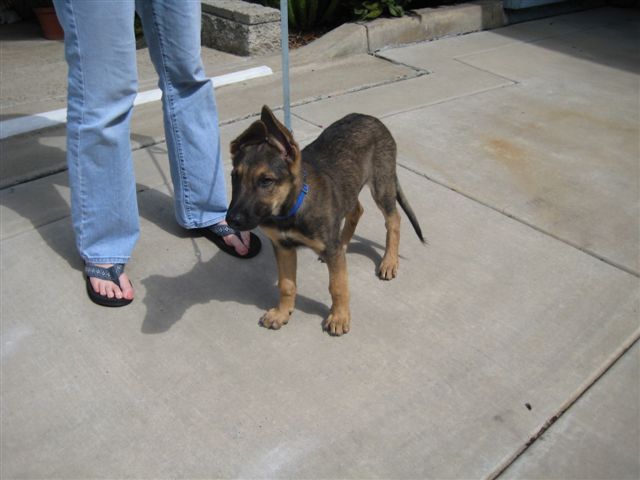 3 month old German Shepherd ears.
QuestionQUESTION: Hello and thank you for you time. I a
3 month old German Shepherd ears.
QuestionQUESTION: Hello and thank you for you time. I a
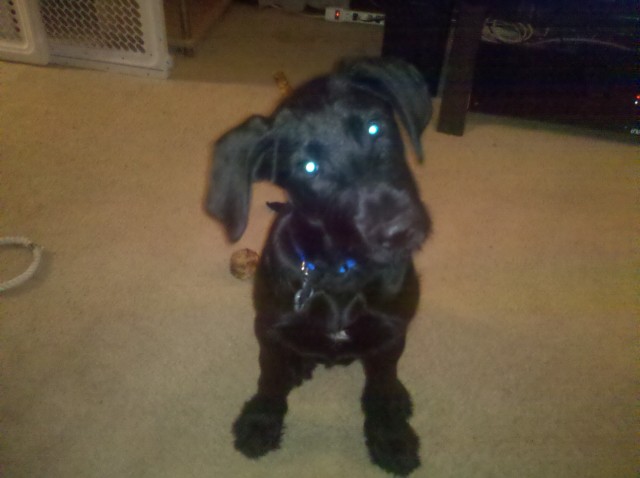 purebreed german shepherd?
Question
king
I purchased a dog 2months ago and he weig
purebreed german shepherd?
Question
king
I purchased a dog 2months ago and he weig
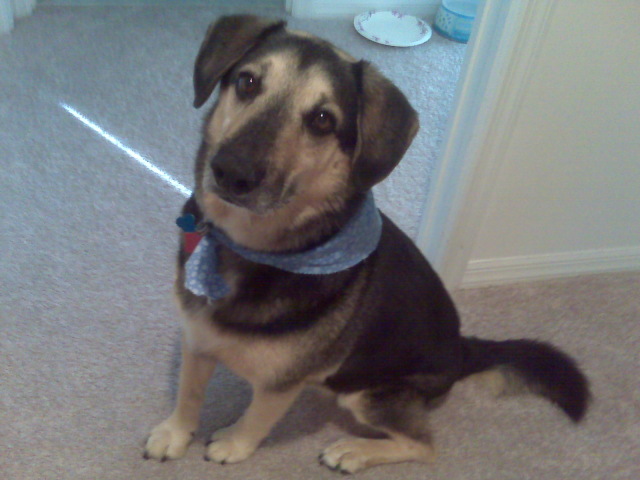 German Shepherd Mix Food
Question
Harley
Hello,
I have a 6 1/2 year old German S
German Shepherd Mix Food
Question
Harley
Hello,
I have a 6 1/2 year old German S
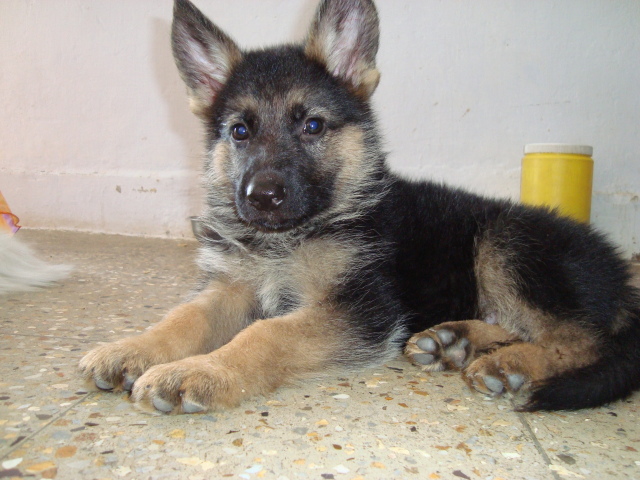 puppy weight
Question
Rocky
I recently purchase 2 mnths old GS puppy
puppy weight
Question
Rocky
I recently purchase 2 mnths old GS puppy
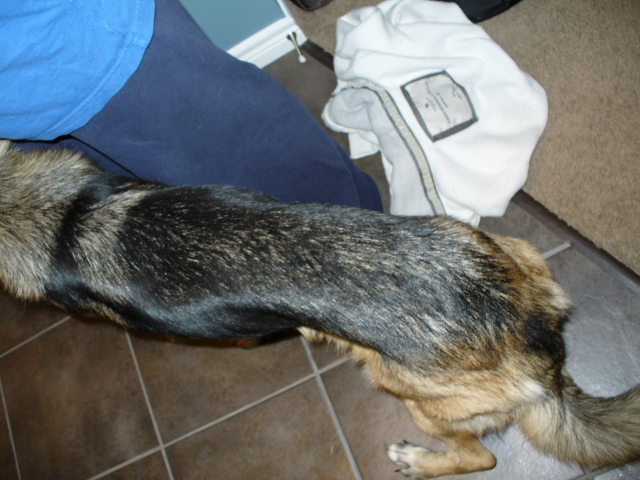 Very thin German Shepherd
Question
Sadie
Hi
We are having problems getting our
Very thin German Shepherd
Question
Sadie
Hi
We are having problems getting our